
If you find yourself in possession of multiple electronic clocks at home, each displaying inconsistent levels of accuracy and causing confusion in timekeeping, consider employing the RX8025 for precision clock synchronization.
The R8025 series encompasses two primary models: the 8025T and the 8025AC.
8025T has a voltage range of 1.60V to 5.5V.
8025AC has a voltage range of 1.15V to 5.5V.
A key distinction between the 'T' and 'AC' suffixes lies in temperature compensation. The 'T' variant incorporates temperature compensation, requiring a minimum voltage of 2.2V to activate this feature, extending up to a maximum of 5.5V. In contrast, the AC chip does not feature temperature compensation. The inclusion of temperature compensation contributes significantly to enhanced precision.
For electronic clocks powered by 1.5V, it is advisable to opt for the AC chip. If you wish to utilize the T chip with a 1.5V power source, supplementary power in the range of 2.2V to 3V is essential. This can be achieved by introducing a CR2032 battery, voltage boosting, or lithium battery voltage regulation, depending on individual requirements.
For electronic clocks operating with a power supply of 3.0V or 4.5V, the T chip stands as an optimal choice.
A notable advisory issued on July 30, 2020, specifies that when incorporating the 8025 chip, it serves as a direct replacement for the original crystal oscillator, necessitating the removal of the latter.
The following excerpts are extracted from the specification documents of the RX-8025AC and 8025T (as provided by EPSON).
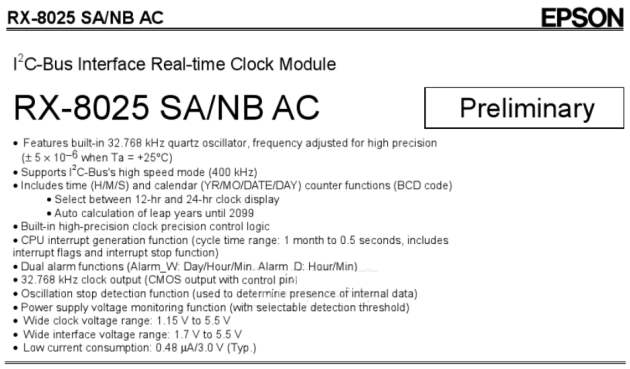
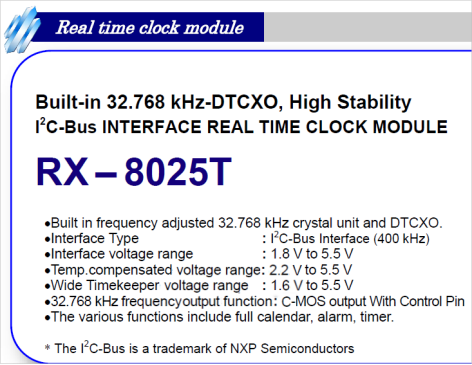
Structure Diagram of the 8025 Chip:
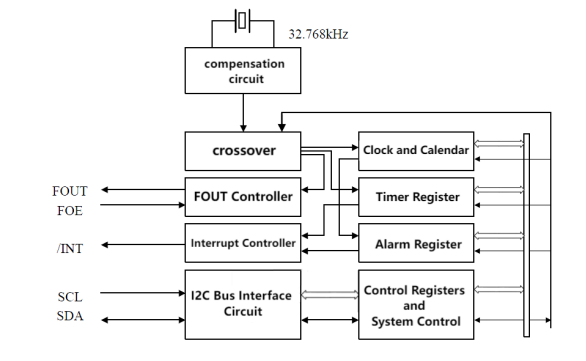
The Inaugural Clock Experiencing Timekeeping Inaccuracy:
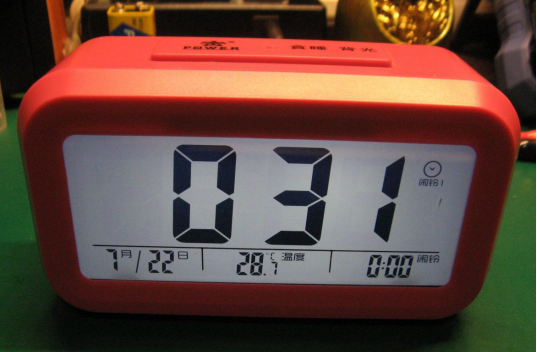
Operated by three batteries, with 3V dedicated to the motherboard and 4.5V allocated for the LED backlight.
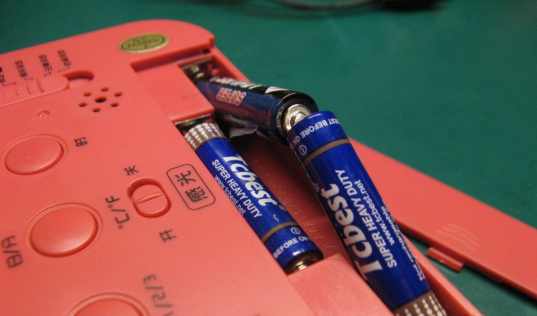
The keypad and motherboard operate independently, with interconnection facilitated through a ribbon cable.
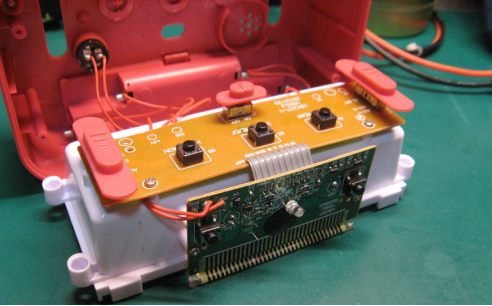
The backlight initially emits a white hue; however, customization is viable, allowing for a more soothing orange glow for nocturnal viewing.
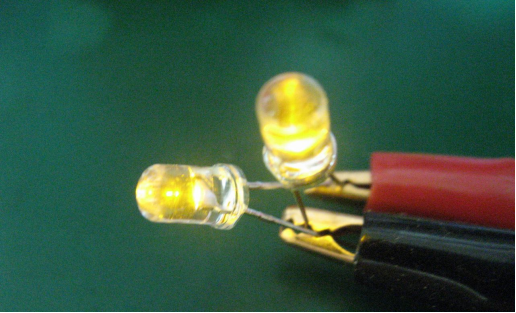
Dual brilliant white LED bulbs, emitting a diffused light pattern.
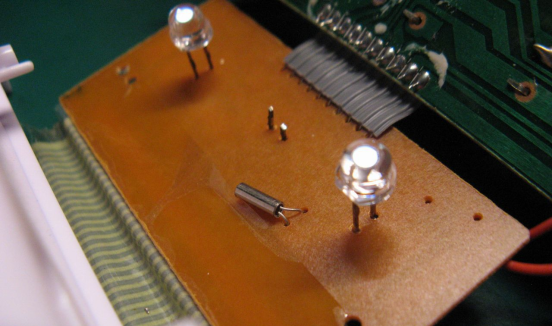
Post customization, it is noteworthy that these orange LEDs necessitate a more substantial electric current to maintain adequate luminosity during low-light conditions at night. This adjustment does result in a noticeable reduction in battery life. As a remedy, the backlight can be activated with a simple press of the top button when required.
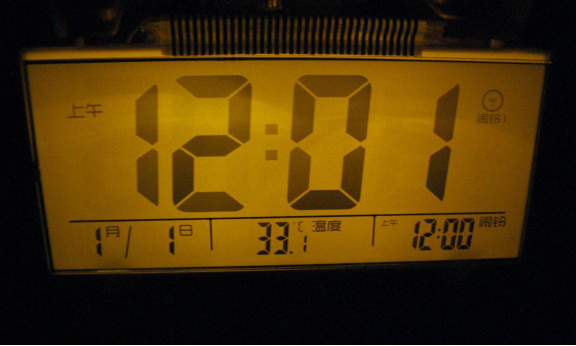
A comprehensive view of the motherboard reveals the presence of four transistors, each corresponding to two LEDs, a light-sensitive resistor, and a buzzer.

A frequency counter is included for the purpose of assessing the original crystal oscillator's frequency.
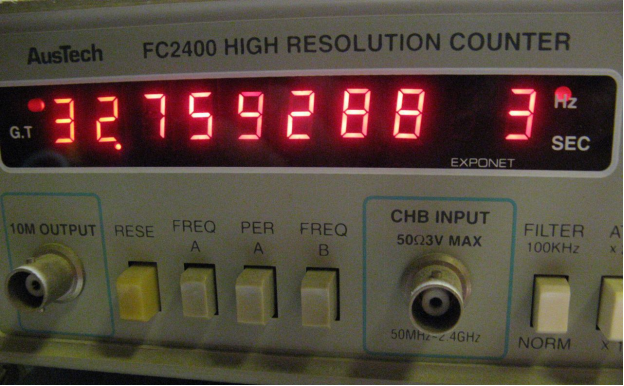
The document also showcases a conversion board for adapting SOP14 to DIP and the disassembled 8025, which can be easily soldered together for added convenience. If spatial constraints present an obstacle, it is entirely feasible to omit the adapter board and engage in direct soldering to minimize space consumption.
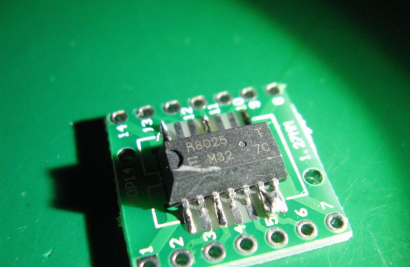
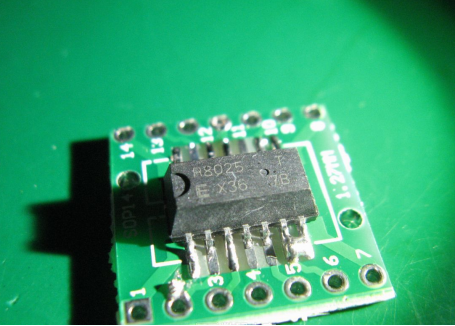
In addition, the document details the testing process for the 8025T's frequency.
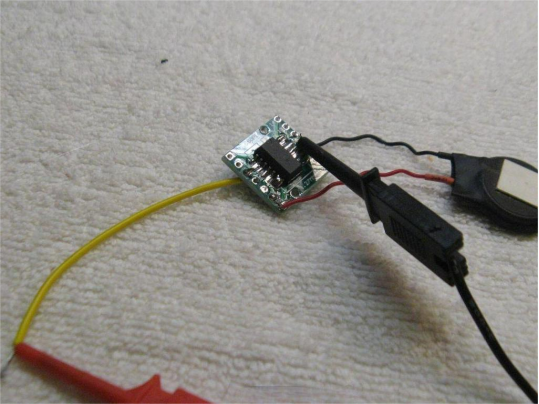
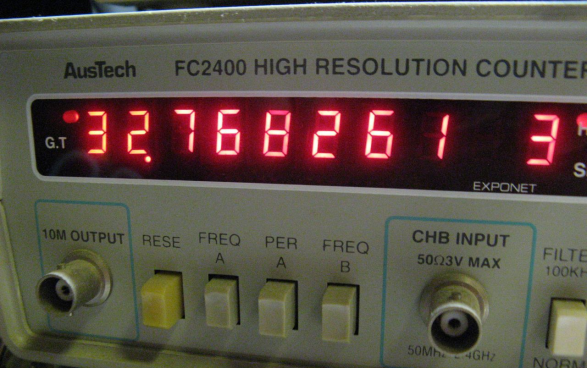
Installing the RX-8025T within the electronic clock is a straightforward process, requiring only the use of foam adhesive for secure attachment.
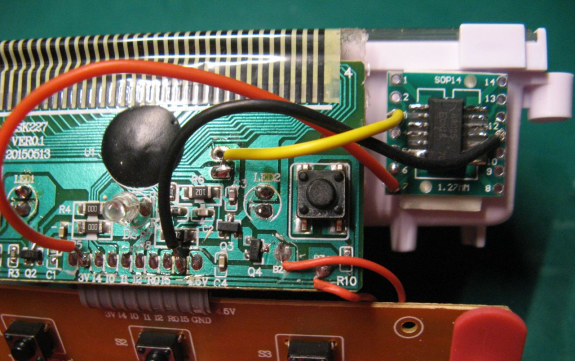
For wiring the 8025 (the same method applies to both T and AC), a parallel connection is made between pins 6 and 7, subsequently linked to the positive power supply. Pin 11 is designated for the negative power supply connection, and pin 3 serves as the output pin, connecting to the solder pad of the electronic clock's crystal oscillator. It is important to note that either of the two solder pads can be used. In the event of non-operation upon power-up, switching to the alternate solder pad will not result in damage to the motherboard. To discern the correct solder pad, a frequency counter may be used; however, recognizing that such equipment may not be readily accessible, we recommend the earlier-mentioned approach.
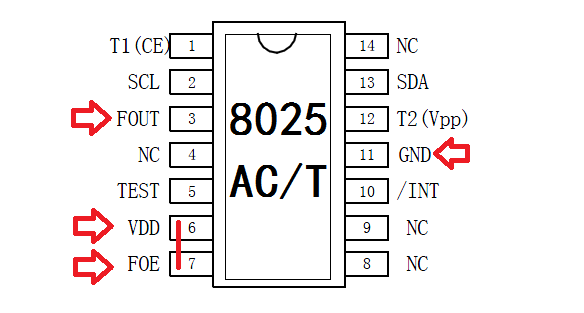
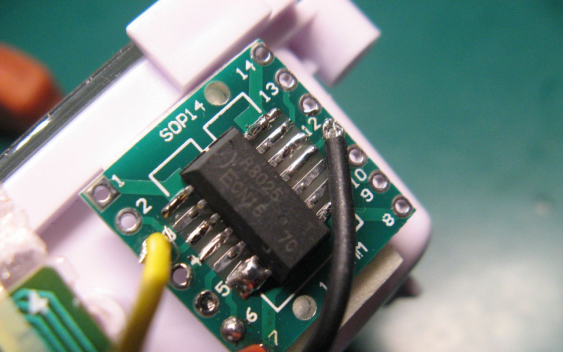
With the successful modification of the first clock using the 8025T, further information and updates can be found in subsequent sections.
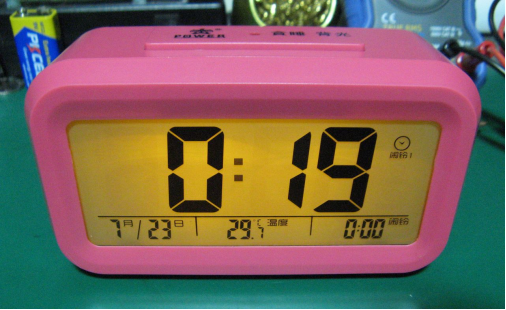
Stay tuned for more in the following sections; keep an eye on this site for updates.




